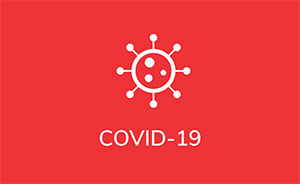This single case has created a buzz in the chronic lymphocytic leukemia community because the patient had CLL.
Here are some of the cogent facts:
- A 71-year-old female with a 10-year history of chronic lymphocytic leukemia (CLL), acquired low immunoglobulins (low antibodies), anemia, and chronic lymphocytosis (too many lymphocytes or cancerous white blood cells) presented to the emergency department with low back and lower extremity pain that ultimately required surgery.
- Subsequent testing showed she had an asymptomatic infection with SARS-Cov2, the virus that causes COVID-19.
- Despite receiving IVIG (intravenous immunoglobulins) to replace her low antibodies, she continued to shed virus that was capable of replication and therefore likely infectious until day 70.
- Despite receiving two doses of convalescent plasma therapy on day 71 and 82 used to fight off the infection, she continued to shed COVID-19 RNA with tests suggesting that she still had actively replicating viruses until day 105 when she finally cleared any signs of the infection.
- The virus mutated several times during her prolonged infection.
- At no time did the patient ever have any symptoms.
Discussion:
This is only one case, but it does stretch the boundaries, one more time, about what we thought we understood about the limits of this scary and evolving infection.
First the good news.
This woman was in the highest risk category for a serious and even fatal outcome with her CLL and her age, yet she never developed even a sniffle. This reminds us that we really don’t know the incidence of COVID-19 in CLL. It is quite possible many cases are undetected due to mild or no symptoms, so that we may be greatly exaggerating our risk of serious complications as a significant number of us may have only mild disease. We just don’t know.
The prolonged shedding is worrisome. Active virus for at least 70 days and maybe 105 is a long time for something to go wrong. Especially as we learned the virus was mutating.
The public health implications could be massive. We have some 3,000,000 folks with some type of immunodeficiency in the USA. How many are asymptomatic carriers of SARS-CoV2? And how many of those are capable of unknowingly spreading the infection, maybe for months?
This case report raises many questions and provides few answers, other than reminding us just how little we know almost a year into the pandemic.
Here is the link to a PDF of the Case Study: Prolonged infectious SARS-CoV-2 shedding from an asymptomatic immunocompromised cancer patient.
Stay strong. We are all in this together.
Brian
Brian Koffman MDCM (retired) MS Ed
Co-Founder, Executive VP and Chief Medical Officer
CLL Society, Inc.

















